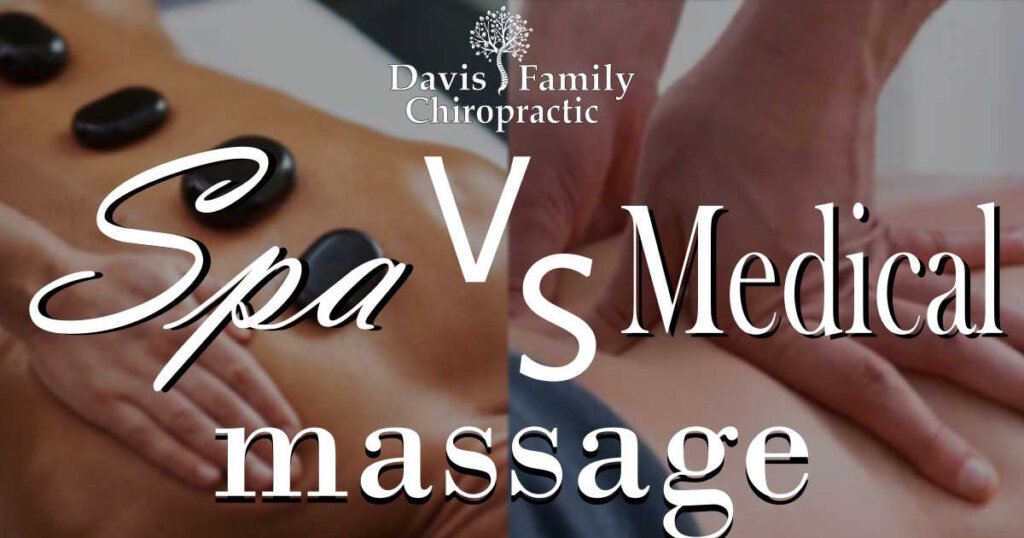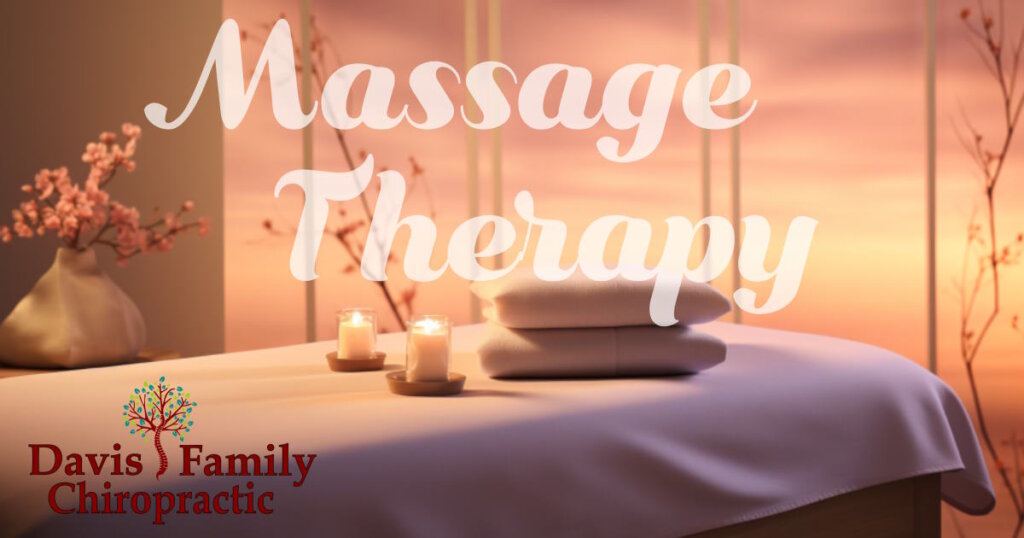Introduction
Massage therapy has long been revered for its myriad benefits, from alleviating stress to managing pain. However, not all massages are created equal. Medical massage therapy and spa massages serve distinct purposes and cater to different needs. This article delves deep into the intricacies of both types of massages, providing a detailed comparison to help you make an informed decision based on your specific requirements.
The Goal of the Massages
Medical Massage Therapy: Targeted Healing
Medical massage therapy is tailored to treat specific medical conditions or injuries. The primary goal is to address pain, dysfunction, or discomfort stemming from musculoskeletal issues, neurological conditions, or other health concerns. This type of massage is often prescribed by healthcare professionals and is integrated into a broader treatment plan. Techniques employed in medical massage therapy are meticulously chosen to enhance blood circulation, reduce muscle tension, and promote tissue healing, ultimately aiming to restore the patient’s functional abilities.
Spa Massages: Relaxation and Rejuvenation
In contrast, spa massages primarily focus on relaxation and overall well-being. These massages are designed to provide a luxurious and calming experience, helping to alleviate stress, improve mood, and enhance general relaxation. The techniques used in spa massages are generally gentler and more fluid, aimed at providing a sense of comfort and tranquility rather than addressing specific medical issues.
Techniques and Modalities
Medical Massage Techniques
Medical massage therapy incorporates a variety of specialized techniques tailored to the patient’s condition. These may include:
- Myofascial Release: This technique involves applying sustained pressure to the myofascial connective tissues to alleviate pain and restore motion.
- Trigger Point Therapy: Focuses on identifying and releasing trigger points, which are tight areas within muscle tissue that cause pain in other parts of the body.
- Deep Tissue Massage: Targets the deeper layers of muscle and connective tissue, using slow, deliberate strokes to relieve chronic tension and pain.
- Neuromuscular Therapy: Combines deep tissue massage and trigger point therapy to balance the nervous and muscular systems, addressing postural and biomechanical issues.
Spa Massage Techniques
Spa massages employ a variety of soothing techniques intended to promote relaxation and rejuvenation. Common modalities include:
- Swedish Massage: Uses long, gliding strokes, kneading, and circular movements on the superficial layers of muscle, promoting relaxation and increasing blood flow.
- Aromatherapy Massage: Incorporates essential oils into the massage to enhance the therapeutic experience with the benefits of aromatherapy.
- Hot Stone Massage: Utilizes heated stones placed on specific points of the body to warm and relax muscles, improving blood flow and relieving stress.
- Reflexology: Focuses on applying pressure to specific points on the feet, hands, and ears, believed to correspond with different organs and systems of the body.
Professional Training and Certification
Medical Massage Therapists
Practitioners of medical massage therapy undergo extensive training that goes beyond the standard massage therapy education. They receive specialized training in anatomy, physiology, pathology, and specific therapeutic techniques. Many medical massage therapists also pursue advanced certifications in areas such as orthopedics, neurology, or sports therapy, ensuring they possess the expertise required to address complex medical conditions.
Spa Massage Therapists
While spa massage therapists also receive foundational training in anatomy and basic massage techniques, their education focuses more on the relaxation and holistic aspects of massage therapy. Certifications in spa therapies often include courses on aromatherapy, hot stone massage, and other modalities that enhance the spa experience. While they may not require the same level of medical knowledge as medical massage therapists, their training is geared towards providing a soothing and enjoyable experience for clients.
Settings and Ambiance
Clinical Settings for Medical Massages
Medical massages are typically performed in clinical environments such as physical therapy clinics, chiropractic offices, or specialized massage therapy centers. These settings are designed to facilitate a therapeutic atmosphere, often featuring equipment like massage tables with adjustable settings, therapeutic tools, and medical-grade products. The focus is on creating an environment conducive to healing and rehabilitation.
Spa Settings for Relaxation Massages
Spa massages, on the other hand, are delivered in serene and luxurious environments designed to enhance relaxation and indulgence. Spas often feature calming music, dim lighting, aromatic scents, and comfortable furnishings to create a peaceful ambiance. The goal is to provide a multi-sensory experience that promotes overall well-being and escape from the stresses of daily life.
Client Experience and Expectations
Expectations from Medical Massage Therapy
Clients seeking medical massage therapy typically have specific health concerns or conditions they aim to address. They may expect a more clinical approach, with a focus on diagnosing and treating specific issues. Sessions are often longer and may involve detailed assessments, including discussing medical history and conducting physical evaluations. Clients should be prepared for targeted techniques that may involve some discomfort, as the primary goal is therapeutic benefit rather than immediate relaxation.
Expectations from Spa Massages
Clients visiting a spa for a massage are generally looking for a relaxing and pampering experience. They expect a gentle touch, soothing techniques, and an overall sense of tranquility. Sessions are usually complemented by additional amenities such as steam rooms, saunas, or hydrotherapy baths. The emphasis is on immediate relaxation and enjoyment, rather than long-term therapeutic outcomes.
Benefits and Outcomes
Health Benefits of Medical Massage Therapy
Medical massage therapy offers numerous health benefits, including:
- Pain Relief: Effective in managing chronic pain conditions such as fibromyalgia, arthritis, and lower back pain.
- Improved Mobility: Helps restore range of motion and flexibility in joints and muscles affected by injury or surgery.
- Enhanced Circulation: Promotes better blood flow, aiding in the healing process and reducing inflammation.
- Stress Reduction: Alleviates stress by addressing physical discomfort and promoting relaxation through therapeutic touch.
Wellness Benefits of Spa Massages
Spa massages also offer significant benefits, particularly related to mental and emotional well-being, including:
- Stress Reduction: The relaxing environment and gentle techniques help lower cortisol levels and promote a sense of calm.
- Improved Mood: Regular spa massages can enhance mood and emotional well-being, reducing symptoms of anxiety and depression.
- Skin Health: Certain spa treatments, such as those incorporating exfoliation or hydration, can improve skin texture and appearance.
- Enhanced Relaxation: Provides an opportunity for clients to disconnect from their daily routine and indulge in self-care.
Choosing the Right Massage for You
Assessing Your Needs
When deciding between medical massage therapy and spa massages, it’s essential to consider your specific needs and goals. If you have a medical condition, chronic pain, or are recovering from an injury, medical massage therapy is likely the best choice.
Considering Personal Preferences
If your primary goal is relaxation and stress relief, a spa massage may be more suitable. Consider your preferences for the massage environment, the type of techniques used, and any additional amenities that can enhance your experience. Spa massages can be a wonderful way to pamper yourself and maintain overall wellness.
Integrating Both for Comprehensive Care
Combining Therapies for Holistic Health
For those who can benefit from both types of massages, integrating medical massage therapy and spa massages into your routine can provide a comprehensive approach to health and wellness. Medical massage can address specific health issues, while spa massages can help manage stress and maintain emotional balance. Discuss with both your healthcare provider and your spa therapist how to best combine these therapies to achieve optimal results.
Frequency and Scheduling
Determining the frequency and scheduling of your massages will depend on your individual needs and lifestyle. For medical massage therapy, your therapist will likely recommend a specific treatment plan based on your condition. Spa massages can be scheduled more flexibly, depending on your personal preference and availability. Balancing both types of massages can create a well-rounded approach to your overall health.
Conclusion
Understanding the differences between medical massage therapy and spa massages is crucial in making an informed decision about which type of massage best suits your needs. Both have unique benefits and cater to different aspects of health and well-being. Whether you seek targeted medical treatment or a luxurious relaxation experience, there is a massage therapy that can enhance your quality of life. By carefully assessing your goals and preferences, you can choose the appropriate massage and enjoy the multitude of benefits each has to offer.
Additional Tips for Maximizing Your Massage Experience
Pre-Massage Preparation
- Hydrate: Drink plenty of water before your massage to help flush out toxins and prevent dehydration.
- Communicate: Share any specific concerns or areas of discomfort with your therapist before the session begins.
- Relax: Arrive a few minutes early to unwind and mentally prepare for your massage.
Post-Massage Care
- Stay Hydrated: Continue to drink water after your massage to aid in toxin removal and muscle recovery.
- Rest: Allow yourself time to rest and relax post-massage to maximize the benefits of the treatment.
- Stretch: Gentle stretching can help maintain the effects of the massage and prevent muscle tightness.
By following these tips and choosing the right type of massage for your needs, you can enhance your overall health and well-being through the art of massage therapy.



